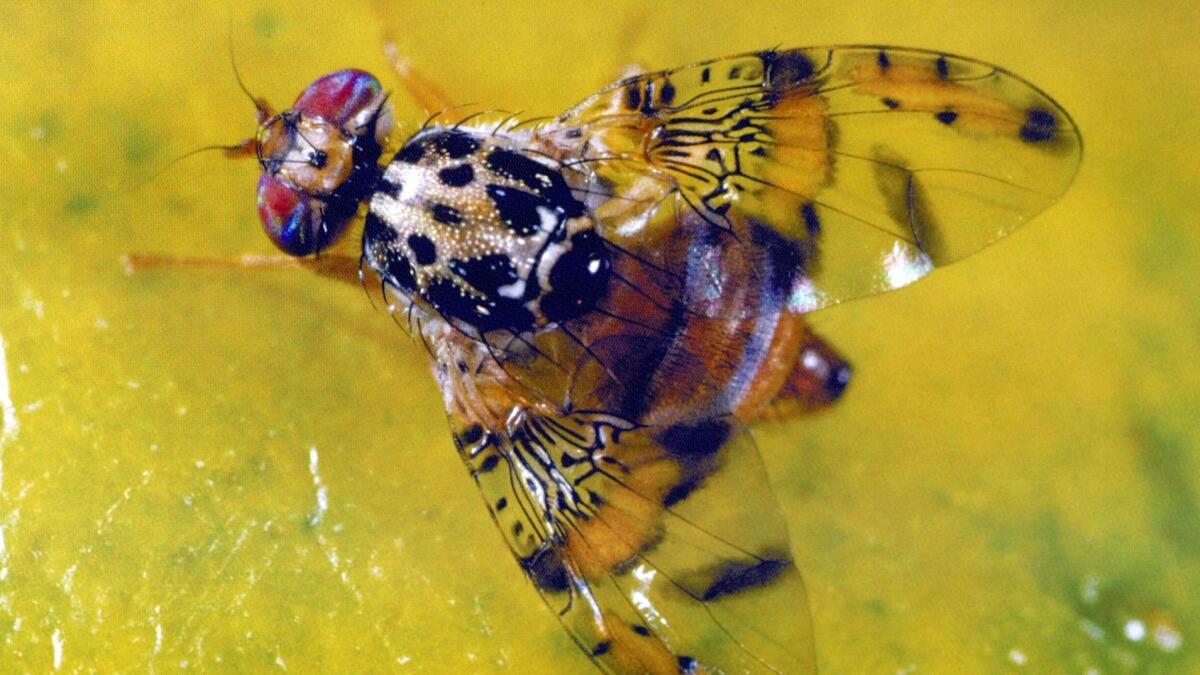Medfly quarantine expands in San Fernando Valley

Agricultural officials have imposed a 101-square-mile quarantine that will restrict the movement of fruit, produce and ornamental plants in the San Fernando Valley, after Mediterranean fruit flies were detected near Panorama City.
Properties within 657 feet of the site will be treated with Spinosad, an organic insecticide that comes from soil bacteria, the California Department of Food and Agriculture announced Friday. In addition, sterile male flies will be released over the next few weeks in a broader area to interfere with mating cycles.
The quarantine area runs roughly from the Van Norman bypass reservoir south to Hayvenhurst Avenue, and from the Cal State Northridge campus east to the 210 Freeway.
The medfly is considered the most serious threat to the state’s agricultural industry, affecting about 250 types of fruits and vegetables, including citrus, grapes, pitted fruits, tomatoes and other significant crops valued at more than $16 billion, according to the U.S. Department of Agriculture.
Infestations make the products unfit for human consumption, which can spark restrictions on exports.
Wholesalers and retailers can still move products in and out of the area if they comply with additional disinfection and other packing regulations. The agency is urging home gardeners not to move any homegrown produce from their property.
The state spends tens of millions of dollars annually to keep the fly from infesting its agricultural heartland in the Central, Imperial, Salinas, Napa and Sonoma valleys, as well as other areas. Use of the pesticide malathion, once a favored tool, was halted in the 1990s in favor of sterile fly programs and application of less hazardous insecticides.
Native to sub-Saharan Africa, the flies have spread through Asia, Europe, South and Central America, parts of North America and Australia, due to increased trade and travel.
Recently, some scientists have questioned the assumption that the medfly and related species have not established permanent populations in the United States. UC Davis entomologist James Carey, who published a study on California’s battle with the insect, declared in 2013 that “the invasion is complete and unstoppable.”
Using data collected on 5,500 adult tropical fruit flies captured in California from 1950 to 2012, Carey and his coauthors concluded that at least four related species gained a foothold in the state more than 20 years ago and had increased their range as they adapted to the environment.
Follow me: @LATgeoffmohan
ALSO
Norwegian Air International gets final approval for flights to U.S., despite opposition
TV news executives are not seeing a bidding war for Fox News star Megyn Kelly
Trump talks to the public through Twitter. Here’s what happens when your next president blocks you







